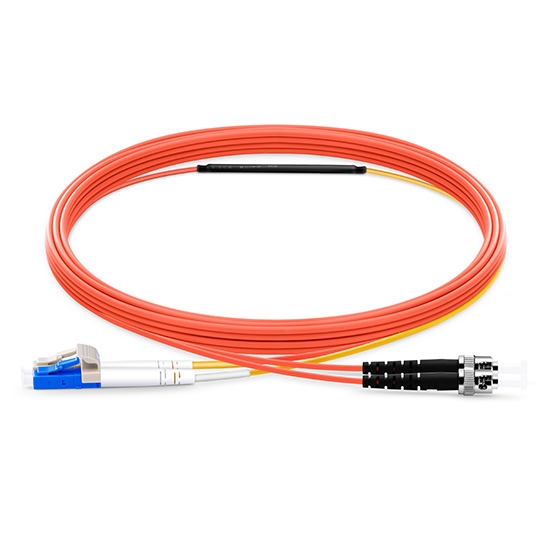LC to ST OM1 Mode Conditioning PVC (OFNR) Fiber Optic Patch Cable

LC to ST OM1 mode conditioning PVC (OFNR) fiber optic patch cable is a type of optical fiber cable used in high-speed data transmission applications, such as data centers, telecommunications networks, and enterprise networks. This particular cable type is designed to allow the seamless connection between LC and ST connectors while also supporting multimode fiber operating in OM1 mode.The LC to ST OM1 mode conditioning PVC (OFNR) fiber optic patch cable incorporates specialized features to ensure reliable and high-quality data transmission. OM1 refers to the multimode fiber type, which has a core size of 62.5 microns and is designed for short-distance data transmission within a local area network (LAN). The mode conditioning feature of the cable is particularly important for ensuring the optimal performance of the network in scenarios where there is a mix of old and new fiber optic components, especially in Gigabit Ethernet applications.The use of PVC (OFNR) as the outer jacket material provides the cable with excellent flexibility and durability, making it

suitable for various installation conditions. This type of cable jacket complies with the National Electric Code (NEC) OFNR designation, indicating that it is suitable for installation in vertical runs or in spaces used for environmental air without any significant restrictions. This makes it a versatile solution for a wide range of networking requirements.The LC to ST connector configuration of this cable type offers compatibility with a variety of network components. The LC connector, with its small form factor and high-density design, permits efficient use of space in networking environments. Meanwhile, the ST connector, featuring a bayonet-style coupling mechanism, ensures secure connections. This combination allows the cable to bridge the gap between these dissimilar connectors, providing reliable and seamless

connectivity.The features of the LC to ST OM1 mode conditioning PVC (OFNR) fiber optic patch cable make it a valuable component for network administrators and engineers aiming to optimize their network performance. This cable's ability to support OM1 multimode fibers with mode conditioning ensures that the network can reliably transmit data without degradation or signal loss.In conclusion, the LC to ST OM1 mode conditioning PVC (OFNR) fiber optic patch cable is a crucial component for network installations involving multimode fiber in OM1 mode. Its ability to seamlessly connect LC and ST connectors while providing mode conditioning support makes it an indispensable tool for optimizing network performance in high-speed data transmission applications. With its durable PVC (OFNR) outer jacket and versatile connector configuration, this type of fiber optic patch cable offers network administrators a reliable and efficient solution for addressing connectivity challenges and ensuring the smooth operation of their networks.









